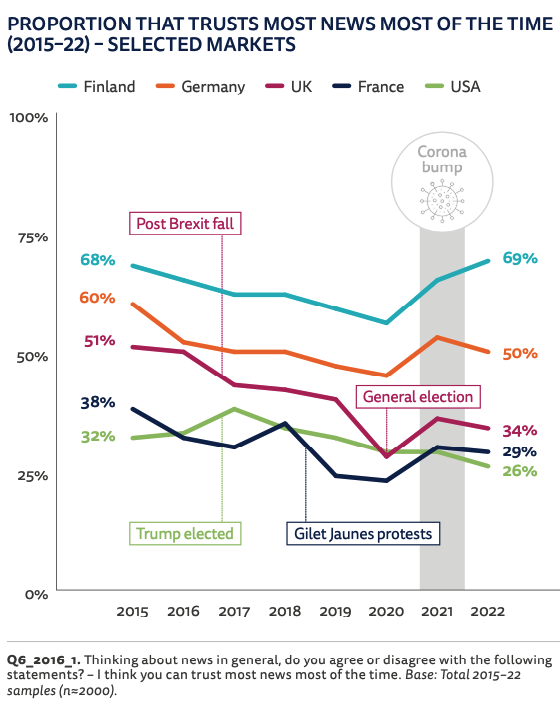
Last week, the Reuters Institute for the Study of Journalism at the University of Oxford published its annual Digital News Report.
Now in its tenth year, the report is essential to make sense of the attitudes and behaviors of news consumers around the world. Findings in the latest report stem from a survey of more than 90,000 digital news users in 46 countries across five continents.
Featuring profiles of each market, as well as a comparative analysis covering some of the biggest countries, the study is packed with data that newsrooms can use to inform their evolving digital strategies.
Over the past decade, these reports have heralded trends in online news consumption – including the shift to mobile and the growing importance of social media. Alongside these major trends, studies have also highlighted emerging issues in journalism, such as the rise of misinformation, trust in journalism and the news habits o f younger audiences.
Against that backdrop, here are five essential — and potentially overlooked — findings from this year’s report:
1. Trust in the news is highest in Finland
Finland remains the country with the highest levels of overall trust (69%) in the news.
This is up four points from 2021 — and 13 points since 2020. This makes Finland one of only two other markets where more than 60%of the sampled population indicated that they “trust most news, most of the time,” the others being Portugal and South Africa.
On average globally, only around four in ten survey respondents (42%) said that they trust most news most of the time. Trust is lowest in the U.S. and Slovakia (both at 26%), followed by Taiwan and Greece (27%).

2. The average age of a digital news subscriber is almost 50 years old
Getting younger audiences to take an interest in the news, never mind paying for it, is a huge challenge for media outlets today.
This problem was made clear through the findings that indicated that the average age of those paying for digital news is 47 years old. In the U.S., only 17% of news subscribers are under 30, and only 8% in the U.K..
However, the percentage of young subscribers in the U.S. also matches the average across the 20 countries where payment for news is relatively widespread. Norway continues to be the global leader for digital news payments (41% of users paid for online news content in the past year), followed by Sweden (33%), Finland (19%) and the U.S. (19%).
by Damian Radcliffe, International Journalists’ Network
Photo by 愚木混株 cdd20 on Unsplash
Related posts
Magazine Training International’s mission is to encourage, strengthen, and provide training and resources to Christian magazine publishers as they seek to build the church and reach their societies for Christ.

